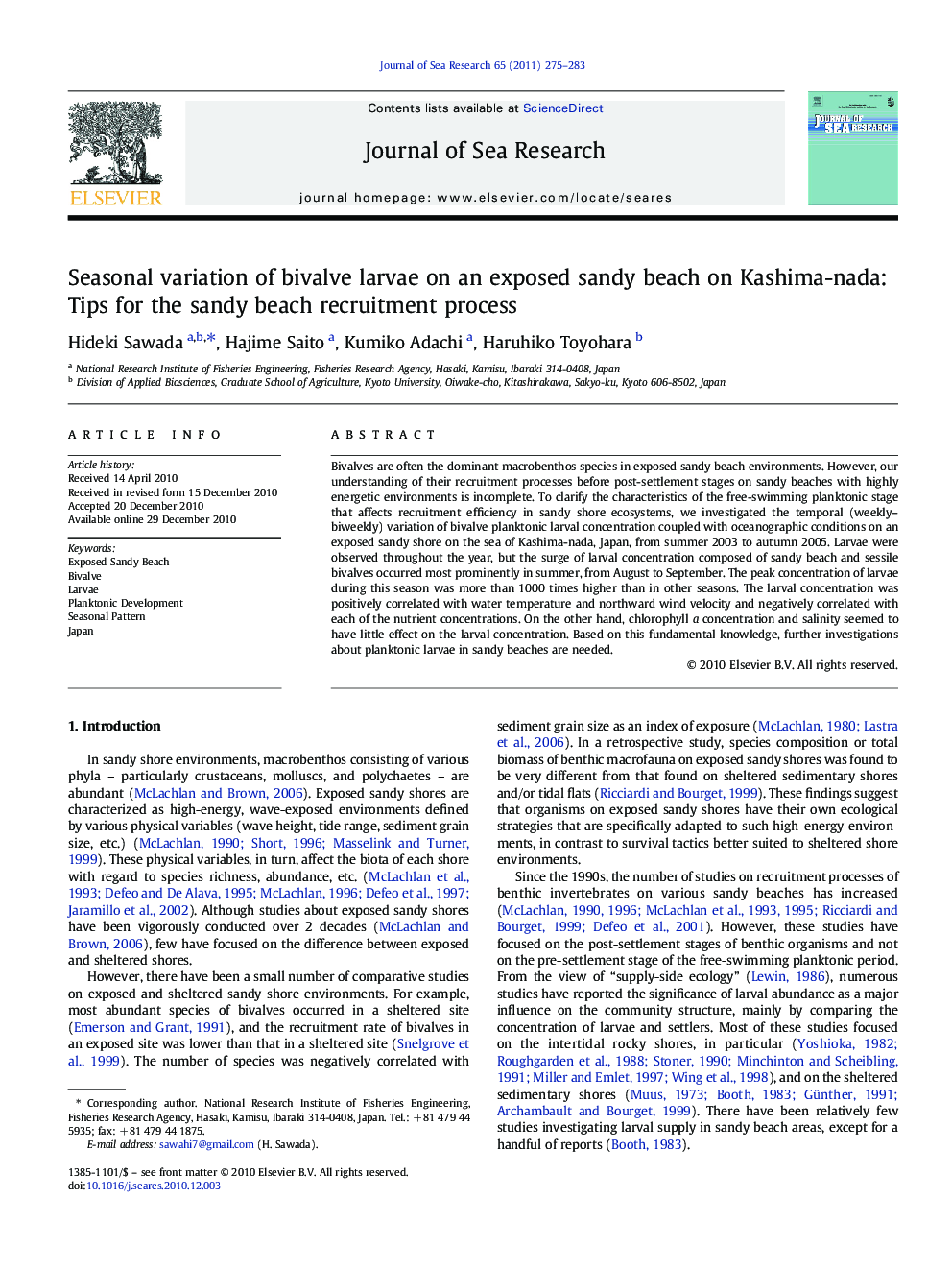| کد مقاله | کد نشریه | سال انتشار | مقاله انگلیسی | نسخه تمام متن |
|---|---|---|---|---|
| 4550206 | 1328136 | 2011 | 9 صفحه PDF | دانلود رایگان |

Bivalves are often the dominant macrobenthos species in exposed sandy beach environments. However, our understanding of their recruitment processes before post-settlement stages on sandy beaches with highly energetic environments is incomplete. To clarify the characteristics of the free-swimming planktonic stage that affects recruitment efficiency in sandy shore ecosystems, we investigated the temporal (weekly–biweekly) variation of bivalve planktonic larval concentration coupled with oceanographic conditions on an exposed sandy shore on the sea of Kashima-nada, Japan, from summer 2003 to autumn 2005. Larvae were observed throughout the year, but the surge of larval concentration composed of sandy beach and sessile bivalves occurred most prominently in summer, from August to September. The peak concentration of larvae during this season was more than 1000 times higher than in other seasons. The larval concentration was positively correlated with water temperature and northward wind velocity and negatively correlated with each of the nutrient concentrations. On the other hand, chlorophyll a concentration and salinity seemed to have little effect on the larval concentration. Based on this fundamental knowledge, further investigations about planktonic larvae in sandy beaches are needed.
Research Highlights
► In sandy beaches, recruitment processes of bivalves are not fully understood.
► We studied temporal abundance of bivalve planktonic larvae in a sandy beach.
► Larvae identified by PCR–RFLP were composed of both sandy beach and sessile species.
► Peak larval abundance in summer was over 1000 times higher than in other seasons.
► Larvae were abundant in warm, nutrient poor water or northward wind conditions.
Journal: Journal of Sea Research - Volume 65, Issue 2, February 2011, Pages 275–283